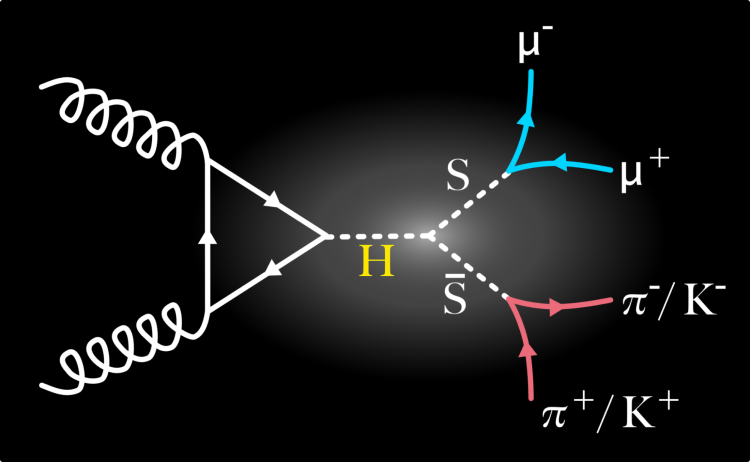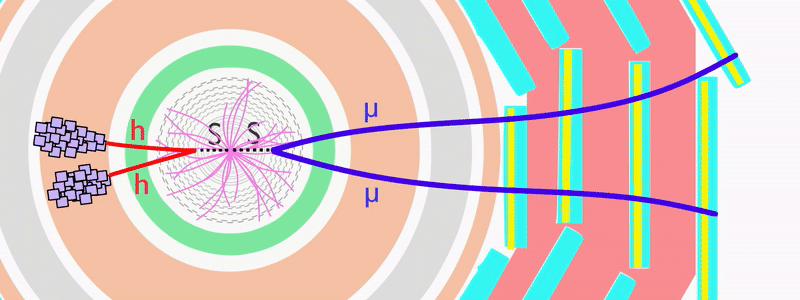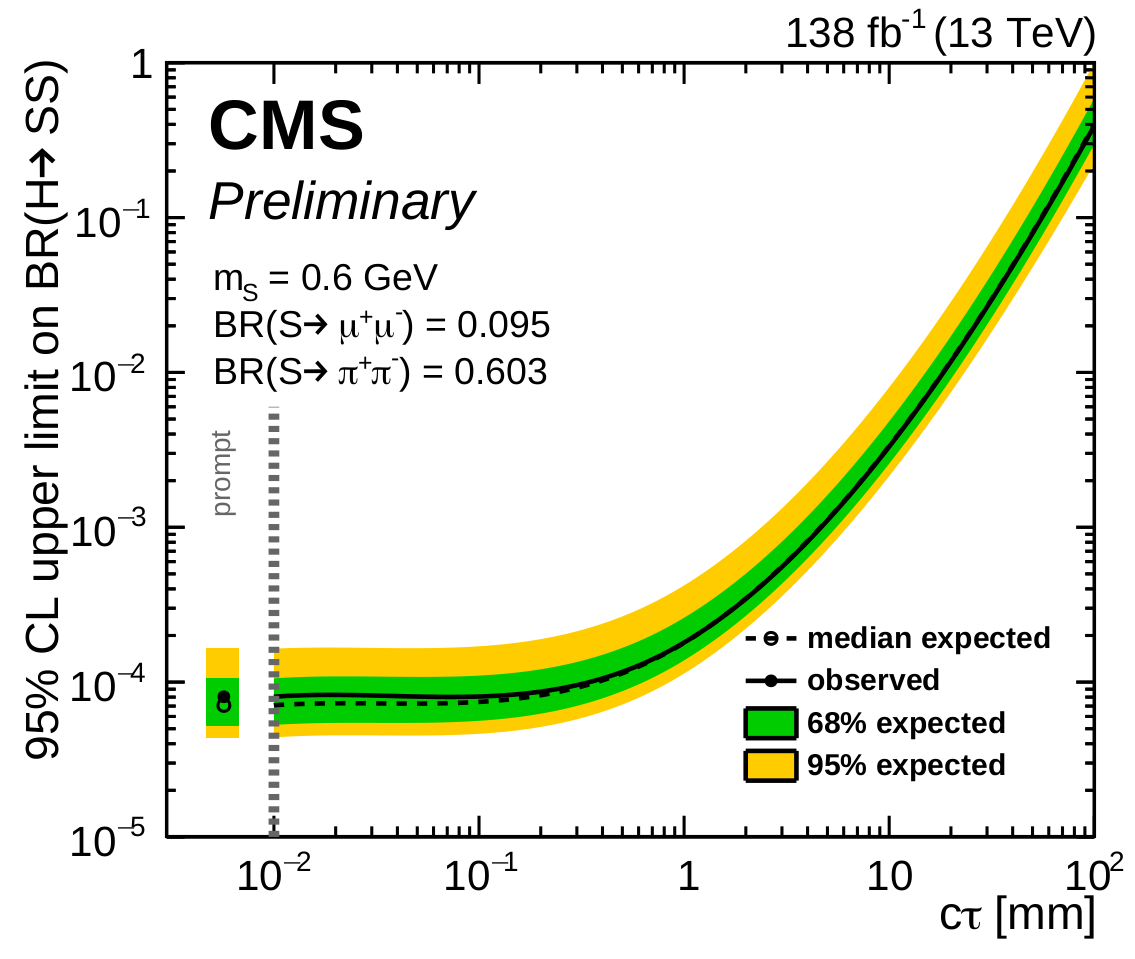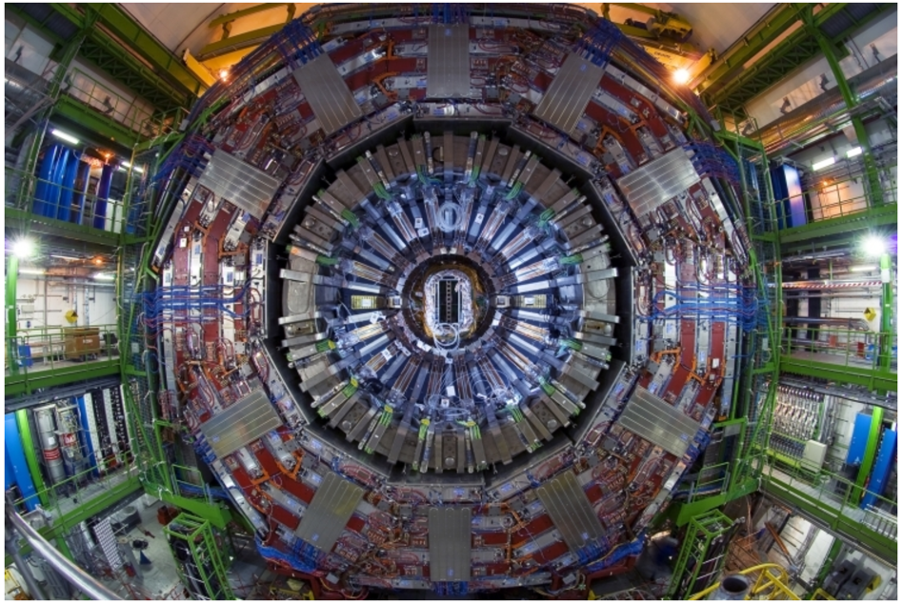
In a first search of its kind at the LHC, the CMS experiment looks for light beyond-the-standard-model particles with a mass in the GeV range that decay into charged hadrons and muons. It establishes that if they exist, they would be produced in less than 0.01% of all Higgs boson decays.
The Higgs boson discovery in 2012 confirmed a crucial piece of the standard model. The unique properties of the Higgs boson not only complete the standard model but also invite the question – what does the Higgs boson have to do with dark matter? A new, lightweight scalar boson, much like the Higgs boson, is often proposed as a link between the standard model and dark matter particles.
In such a scenario, it is possible for the Higgs boson to decay into two identical scalar bosons, each of which can further decay into two fermions. These fermions could either be leptons such as muons or quarks, which then typically hadronize to form jets (a collimated spray of particles). However, when the scalar boson mass drops below 2 GeV, the available energy mainly restricts the hadronization to two kaons or two pions only. In addition, the scalar bosons can travel a measurable distance in the detector before decaying, leading to a “displaced” signature for the resulting particles.


Above: A representation of lightweight scalar particles (S) being produced in a Higgs boson decay, and giving two muons (μ) and two charged hadrons (h), which are detected by the CMS detector.
The search presented here targets such lightweight scalar bosons, referred to as S, with masses between 0.4 to 2 GeV. We also consider the possibility of displaced signatures, where the scalar boson can travel up to 600 mm before decaying. This is the first search at the LHC of its kind to investigate light scalar bosons with short lifetimes and decaying into charged hadrons.
Given that the proton-proton collisions produce a tremendous amount of hadrons, the biggest challenge with this search is to identify the charged hadrons coming from the lightweight scalar boson decays. The precise tracking capabilities of the CMS detector help in reconstructing the momentum of these hadrons and the point they originate from (termed as the vertex). The vertex information is vital in fully reconstructing the event when the particles are displaced.
“The main strategy has been to treat the two charged hadrons on equal footing with the two muons. Since the hadron pair and the muon pair come from identical bosons, requiring the invariant mass of each pair to be similar within a very narrow window is one of the crucial elements in reducing the background to nearly zero,” says Soumya Dansana, a PhD student at the Interuniversity Institute for High Energies (IIHE-ULB/VUB) at Brussels who has been leading the search. “In such a case, any evidence of a lightweight scalar boson would stick out like a peak against a flat horizon.”

Above: Upper limit on how often the Higgs boson decays to SS as a function of different lifetimes, with the mass of S being 0.6 GeV.
After analyzing the data, we found no significant deviation with respect to the expected background. We thus set upper limits on how often the Higgs boson might decay into the lightweight scalar bosons below 2 GeV. For scalar bosons decaying almost instantly, the extracted upper limits are of the order of 10–4. This means that if such scalar bosons do exist, they would be produced in less than 0.01% of Higgs boson decays.
The results are based on data collected in the years 2016–2018 (the Run 2 data-taking period of the LHC). With the ongoing Run 3 data taking, a significant improvement is already expected with new trigger strategies to enhance our sensitivity to the displaced scenarios. Further down the road, the High-Luminosity LHC and its upgraded tracking capabilities will significantly extend our reach in the search for dark matter.
Written by: Soumya Dansana, for the CMS Collaboration
Edited by: Muhammad Ansar Iqbal
Read more about these results:
-
CMS Physics Analysis Summary (EXO-24-034): "Search for light scalar particles from Higgs boson decays in exclusive final states with two muons and two hadrons"
-
@CMSExperiment on social media: Bluesky - Facebook - Instagram - LinkedIn - TikTok - Twitter/X - YouTube

